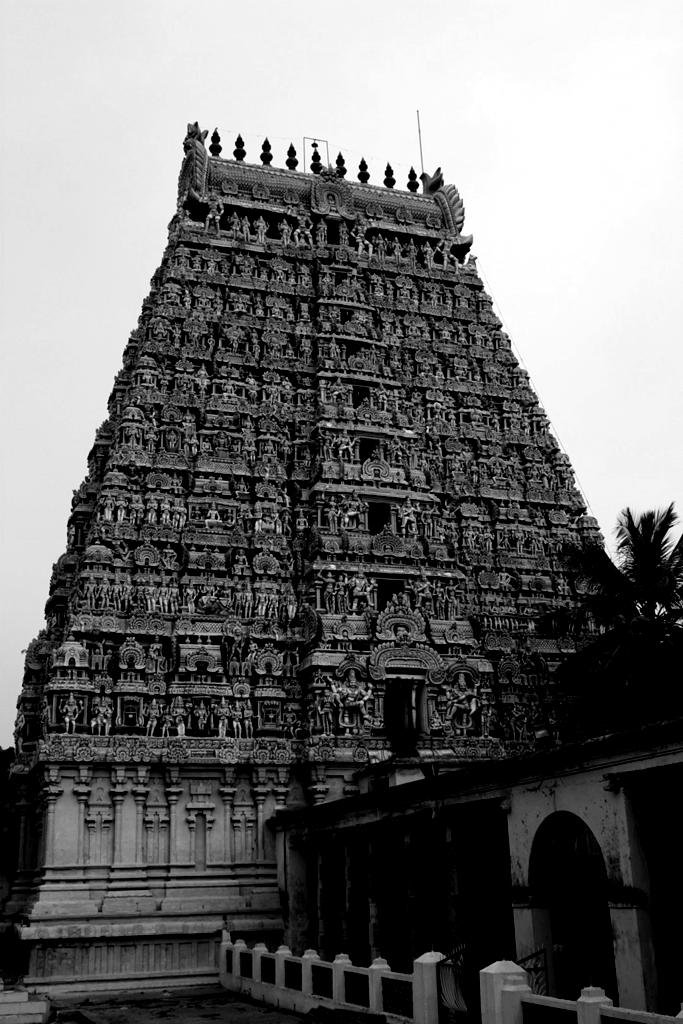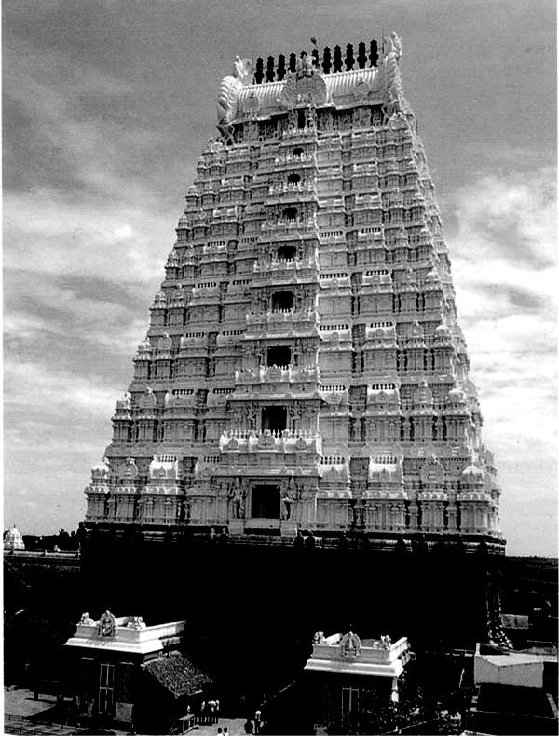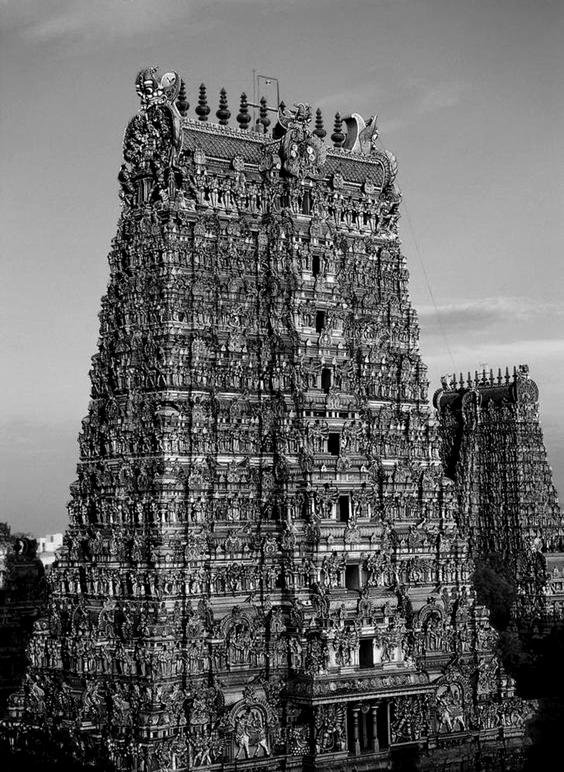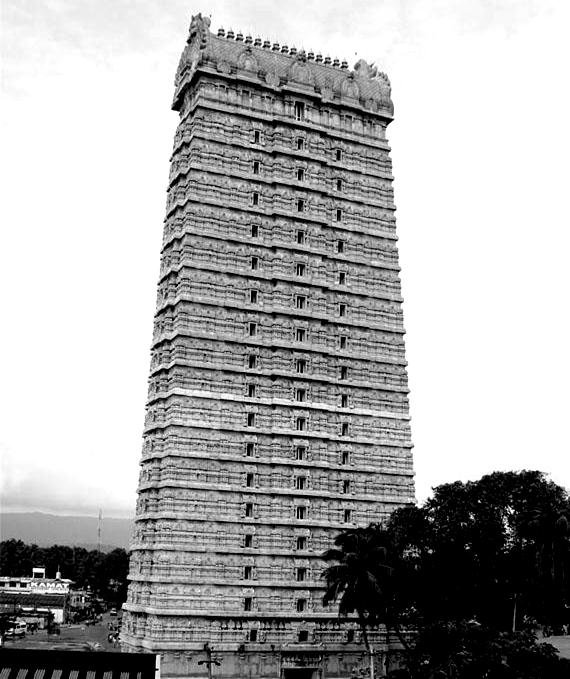Kashyapa Shilpa-shastra (study)
by K. Vidyuta | 2019 | 33,520 words
This page relates ‘Conclusion (Gopuras)’ of the study on the Kashyapa Shilpa-shastra (in English) with special reference to the characteristics of Prakara (temple-components), Mandapa (pavilions) and Gopura (gate-house). The Silpa-Sastras refers to the ancient Indian science of arts and crafts, such as sculpture, architecture and iconography. This study demonstrates the correlatation between ancient Indian monuments (such as temples and sculptures) and the variety of Sanskrit scriptures dealing with their construction.
3. Conclusion (Gopuras)
Though the gopuras are an iconic part of south Indian temples, texts like the Mayamata and Œśāna Śivagurudeva paddhati mention the gopura but do not consider it as important. Also, the texts prescribe that each prākāra should have doorways on all four sides and specifically with a gopura over each one of them. This is found in the temple of Tiruvannamalai in Tamilnadu. But, generally the wall facing the sanctum sanctorum alone has this structure called mahādvāra and since the 10th Cent. A.D. it has become customary to have a gopura over there.
The sample for the earliest impressive gopura is found on the gateway of Avani-Kandarpeśvara temple at Kiḷayūr (Trichy District). The gopuras built by later Pandyas and Cholas (between 15th to 17th Cent. A.D.) are majestic and massive such as those in Chidambaram, Kumbakkonam, Madurai, Tirunelveli and Tiruvāṇaikkāval (near Śrīraṅgam). Inscriptions also refer to such huge tall gopuras of temple as "" vipulottuṅgagopuram devamandiram' '. The really tall gopuras measure a height of about 200 feet and the Śilpa texts permitted as many as sixteen stories.
Despite the immensity and artistic beauty of the gopuras, they are not regarded as important features in the north Indian Temples, but this makes it an unique emblem of south Indian temples.
The building of the gopuras is an ancient practice seen from the days of Pallavas and the Badami Chalukyas. The Rashtrakutas, the Cholas and the Hoysalas continued this tradition. The towers above the gateways during these periods were mainly built out of stone and they possessed only one tala.
It was during the Vijayanagara period, that the gopuras were built on a very large scale and in large numbers in a magnificent manner. Even many of the existing temples were provided with gopuras.
Kumbeśvara Temple—Chola Period

Ekāmreśvara Temple Gopura—Pallava Period

Mīnākṣi Temple—Pandya Period

Murudeśvar Temple—Vijayanagara Period

This temple at Murdeswar, Karnataka, has the tallest gopura with 20 storeys and 237.5ft tall. Thus the gopuras gradually started to develop as time advanced. Though the styles differ from region to region, the fundamental structures do not seem to have deviated from those prescribed in the Āgamas.
